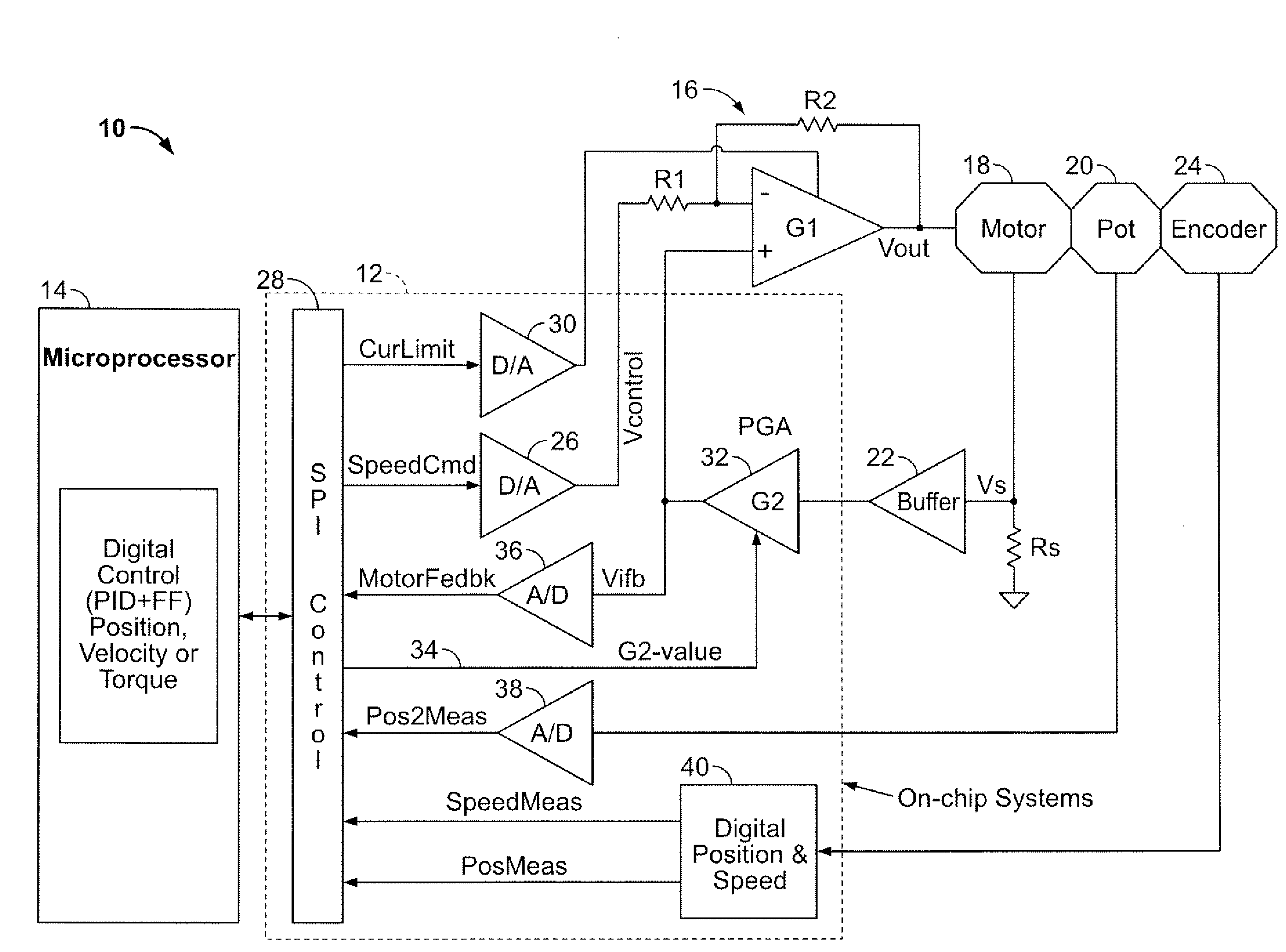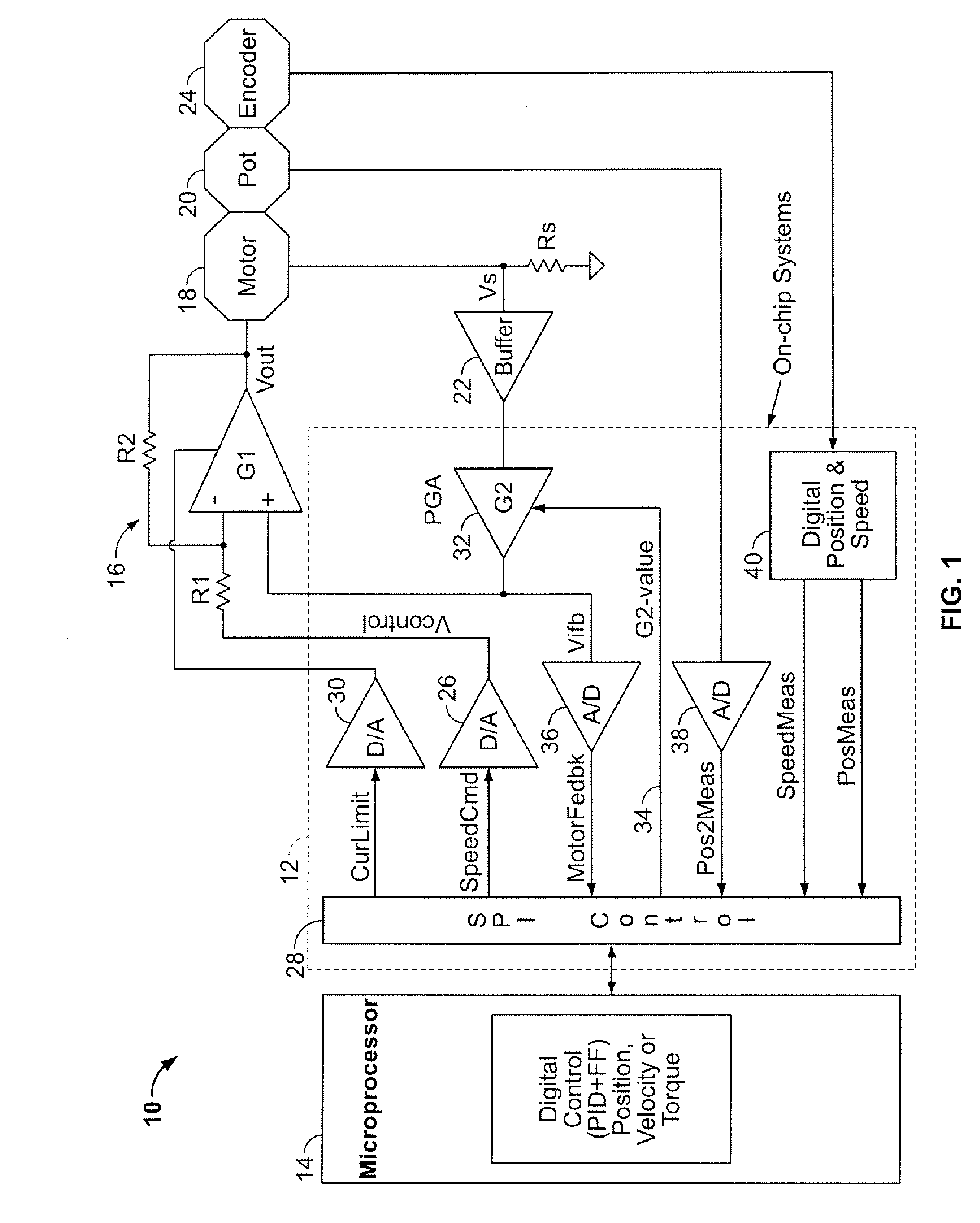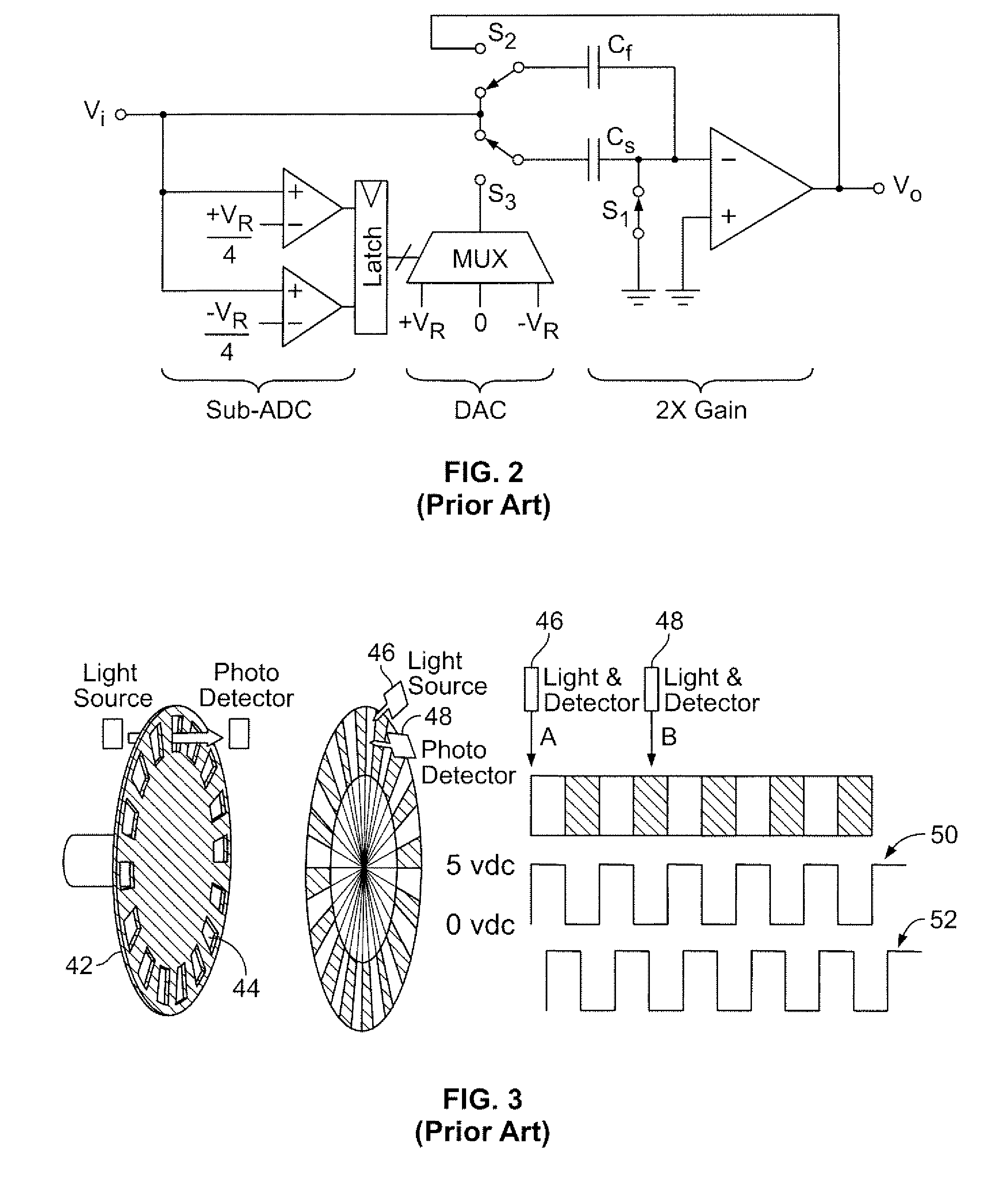Adaptive and reconfigurable system for DC motor control
a dc motor and reconfigurable technology, applied in the direction of electronic commutators, dynamo-electric converter control, instruments, etc., can solve the problems of inability to meet all system requirements, lack of dexterity, and awkward current manual instrumentation
- Summary
- Abstract
- Description
- Claims
- Application Information
AI Technical Summary
Benefits of technology
Problems solved by technology
Method used
Image
Examples
Embodiment Construction
[0022]FIG. 1 is an electrical schematic diagram of a motor control circuit 10, constructed in accordance with an embodiment of the present invention. The motor control circuit 10 includes a mixed analog / digital control / measurement circuit block 12, implemented as a VLSI integrated circuit chip, a supervisory microprocessor 14 digitally coupled to the control / measurement circuit block 12, an external amplifier 16 whose inverting input Vcontrol is controlled by an analog voltage supplied by the control / measurement circuit block 12, a DC motor 18 whose initial position is set by an absolute analog sensor, such as a potentiometer, 20 and whose armature current is sensed by a buffer / sensor 22, the buffer / sensor 22 providing a feedback signal to the control / measurement circuit block 12, and an incremental encoder 24 that is optically coupled to the motor 18 and provides one of a pair of digital quadrature signals to the control / measurement circuit block 12. The control / measurement circuit...
PUM
 Login to View More
Login to View More Abstract
Description
Claims
Application Information
 Login to View More
Login to View More - R&D
- Intellectual Property
- Life Sciences
- Materials
- Tech Scout
- Unparalleled Data Quality
- Higher Quality Content
- 60% Fewer Hallucinations
Browse by: Latest US Patents, China's latest patents, Technical Efficacy Thesaurus, Application Domain, Technology Topic, Popular Technical Reports.
© 2025 PatSnap. All rights reserved.Legal|Privacy policy|Modern Slavery Act Transparency Statement|Sitemap|About US| Contact US: help@patsnap.com



